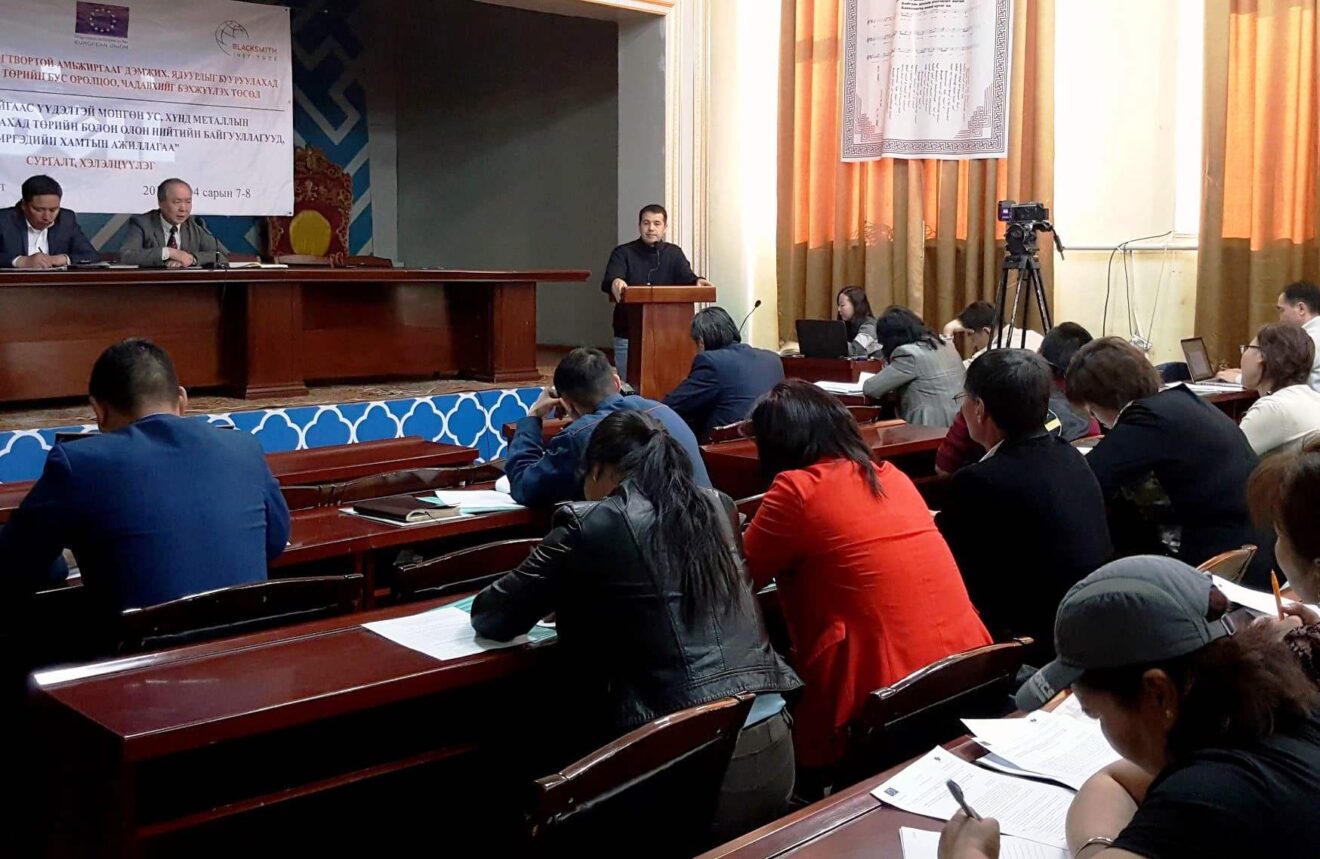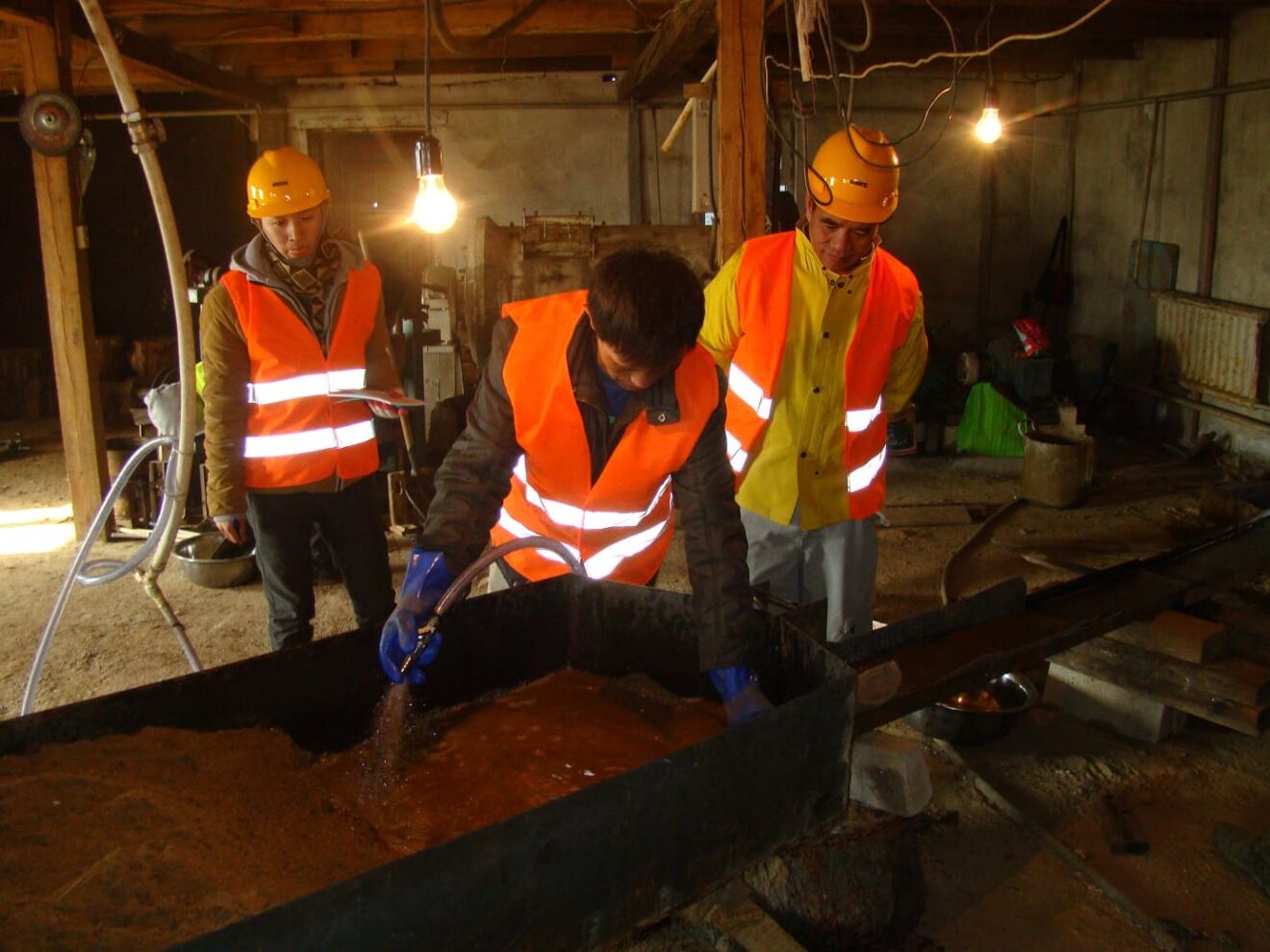Building the Capacity of Mongolian Non-State Actors to Promote Sustainable Livelihoods and Poverty Reduction in Rural Artisanal Gold Mining Areas
Project dates: 2014-2016 Number of people at risk: 100,000
Source of pollution: Mercury used by artisanal and small-scale gold mining
Project implementers: Environment and Security Center of Mongolia (ESCM) and artisanal and small-scale gold mining association Enkh Munkh Ergekh Kholboo (EMEK)
The total cost of program implementation: EUR 530,535, the project was funded by European Union and some travel costs were covered by Trust for Mutual Understanding.
The project was implemented in 2014-2016 by current EHPMI member Environment and Security Center of Mongolia with financial and organizational support of Blacksmith Initiative UK.Project dates: 2014-2016 Number of people at risk: 100,000Source of pollution: Mercury used by artisanal and small-scale gold miningProject implementers: Environment and Security Center of Mongolia (ESCM) and artisanal and small-scale gold…
Mongolia is a country rich in coal, fluorite, copper, gold and other ores. During the transition period of the country from centrally planned to market economy in 1990s, many low-income people started searching and mining for gold as an additional source of income. Such people became known as “ninjas” for carrying big gold washing pans on their backs. Gradually, artisanal and small-scale gold mining (ASGM) in Mongolia became a major source of income for many rural communities. But the use of mercury in the gold extraction process by some of the miners results in environmental contamination and increased risks of mercury poisoning.
In 2008, the Government of Mongolia banned the use of mercury in mining and ore processing to protect the environment and health of people. Despite the ban, the mercury was still frequently used in ASGM communities. According to the United Nations Development Programme (UNDP), Mongolia is the world’s 18th largest mercury emitter, with ASGM activities responsible for 85% of the country’s mercury emissions. Mercury is a toxic substance that can cause serious health problems, including damage to the nervous system, kidney damage, and developmental disorders.
In order to reduce the widespread use of mercury by AGSM, the project intended to introduce to “ninjas” some non-mercury-based gold extraction methods. Particular attention was paid to demonstrations of improved panning techniques successfully used by ASGM communities in Philippines. The goal was to instruct at least 1,000 miners in non-mercury panning methods through training of trainers that would spread the knowledge in miners communities.

The project had the following specific objectives:
- Facilitate engagement and collaboration between central and local government agencies, communities, miners, and other stakeholders to address the issue of mercury reduction in artisanal and small-scale gold mining (ASGM).
- Train and convert at least 1,000 miners to the mercury-free methods.
- Monitor and ensure compliance with ASGM regulations, particularly with regards to mercury use.
- Train government agencies in best practices for stakeholder engagement, participatory planning, awareness raising, mercury-free method miner training, and compliance monitoring.
The project team selected three locations in Mongolia with high number of ASGM communities to implement the planned actions: Zaamar county of Central Province, Mandal County in Selenge Province and Bayan-Ovoo County in Bayankhnogor Province. About 70% of all ASGM miners of Mongolia work in these provinces. Local organizations helped to advance a government priority and improve the economic and environmental sustainability of ASGM in rural communities by giving these communities a voice and assisting them in making the transition to cost effective, mercury-free mining practices.
Site Assessment
After receiving all necessary technical training and being provided with pollution monitoring equipment, the ESCM pollution assessment team measured mercury vapors and soil contamination in identified ASGM sites. The results showed that lead (Pb), arsenic (As), and mercury (Hg) exceeded the maximum allowable levels in soil set in the national standards.
Empowering local governments, miners and health professionals
The project team conducted multiple meetings with the government officials and experts from public health and environmental protection to help residents protect their health and the environment from pollution.
Health practitioner’s trainings were organized in all three project sites during 2016. The project team together with medical and environmental health specialists, of Public Health Institute, who lead the Mercury and heavy metal studies have organized this training. In total, the project trained 80 health practitioners in three provinces in improving their knowledge and skills for diagnosis and firsthand treatment of mercury affected patients within the regions.


Non-mercury gold extraction technique
Training “ninjas” the mercury-free gold ore separation technique used in the Philippines, was one of the project’s main tasks. The idea was to train people who will in turn train more people on their own. Three training sessions were organized in all three project sites. In May 2014, the project team and experts from Denmark and the Philippines have visited all three project sites in Central, Selenge and Bayankhongor Provinces and demonstrated the efficiency of mercury free gold extraction techniques. Over 60 trainers were certified to teach the mercury-free gold separation methods. These certified trainers have trained in total 1,115 ASGM miners in the project area. The project team met with the trained miners and monitored whether they used the new methods. It was assessed that about 80% of the trained miners used the mercury-free techniques.





Non-Mercury Mining Policy Advocacy
The ESCM team actively participated in meetings and conferences at the national and international levels during the project implementation period and shared ideas how opinions to support the improvement of laws regulating small-scale gold mining.
Role of Women
It was observed that women more than men used the introduced panning techniques, because it allowed them to extract gold even from the wastes of ores that were already processed by other miners with less effective methods. Thus, the women were able to avoid digging out and crushing the ore.
Ms. Altantuya is one of the miners trained by the project. Upon successful completion of this training Ms. Altantuya, a resident of Khailaast village of Zaamar, was granted two types of pans for gold recovery. The skills and tools obtained through the project proved very helpful. She was able increase her earnings and no longer use poisonous mercury. Thanks to her improved income, she could afford to improve her gher (traditional dwelling of nomadic people in Mongolia) and buy a new wardrobe and floor covers.

Link to project description at PE website: Mongolia teaching van trailblazes a path to mercury-free mining
